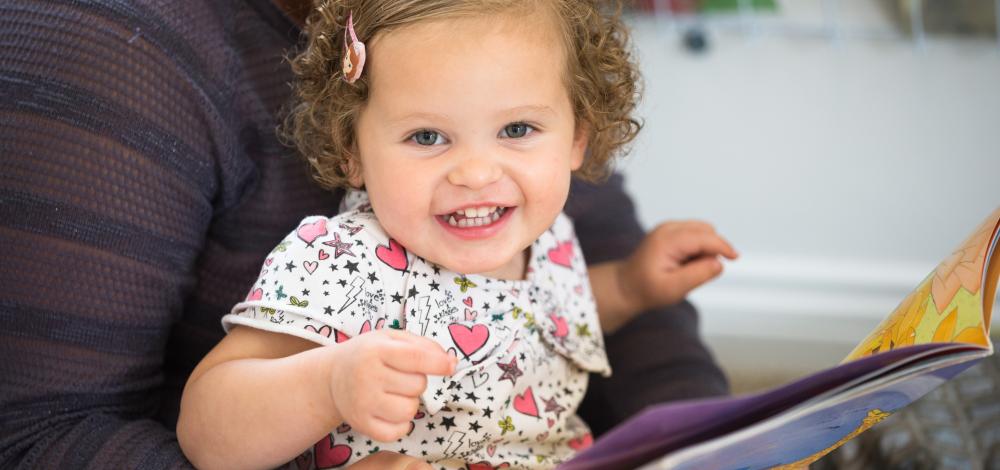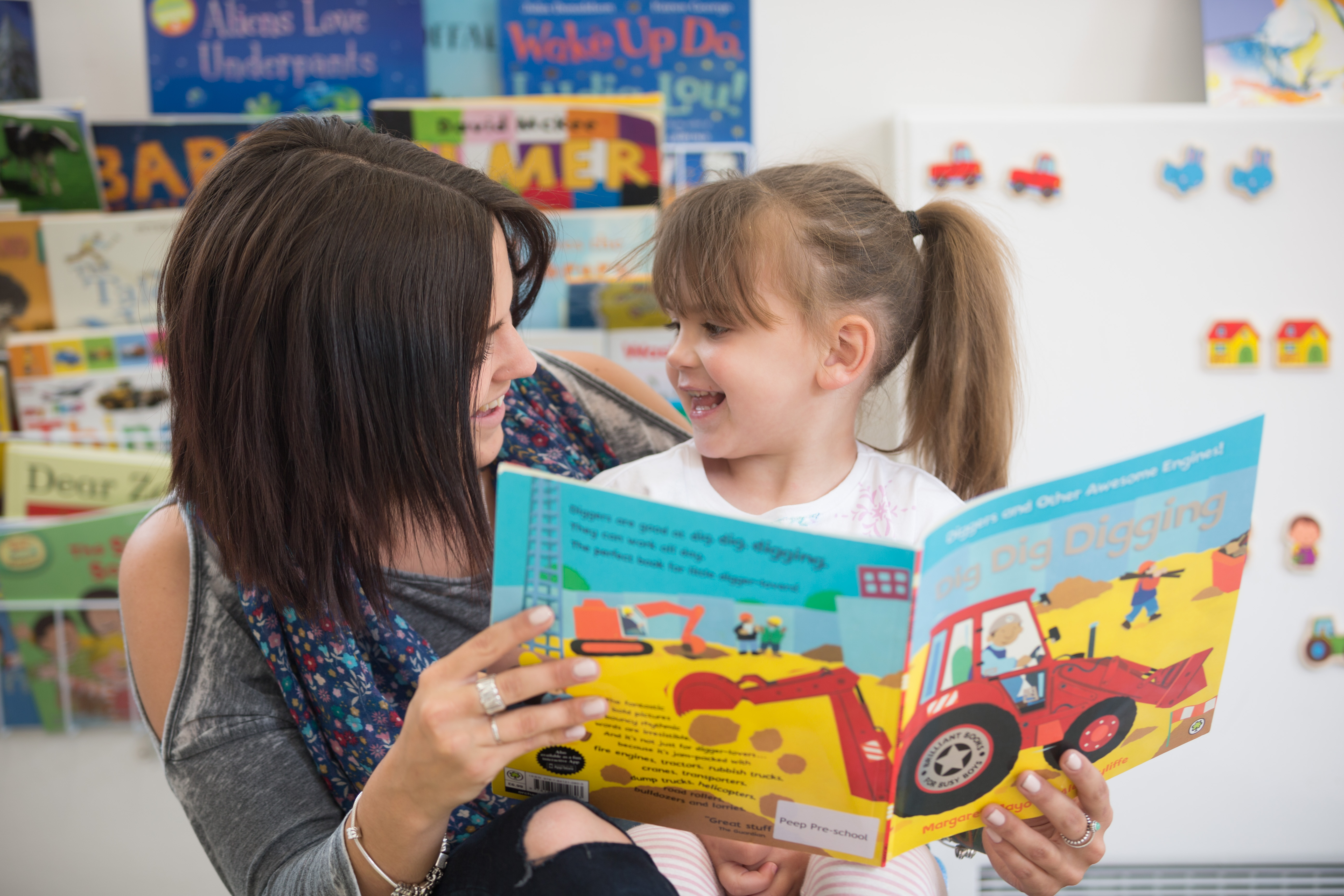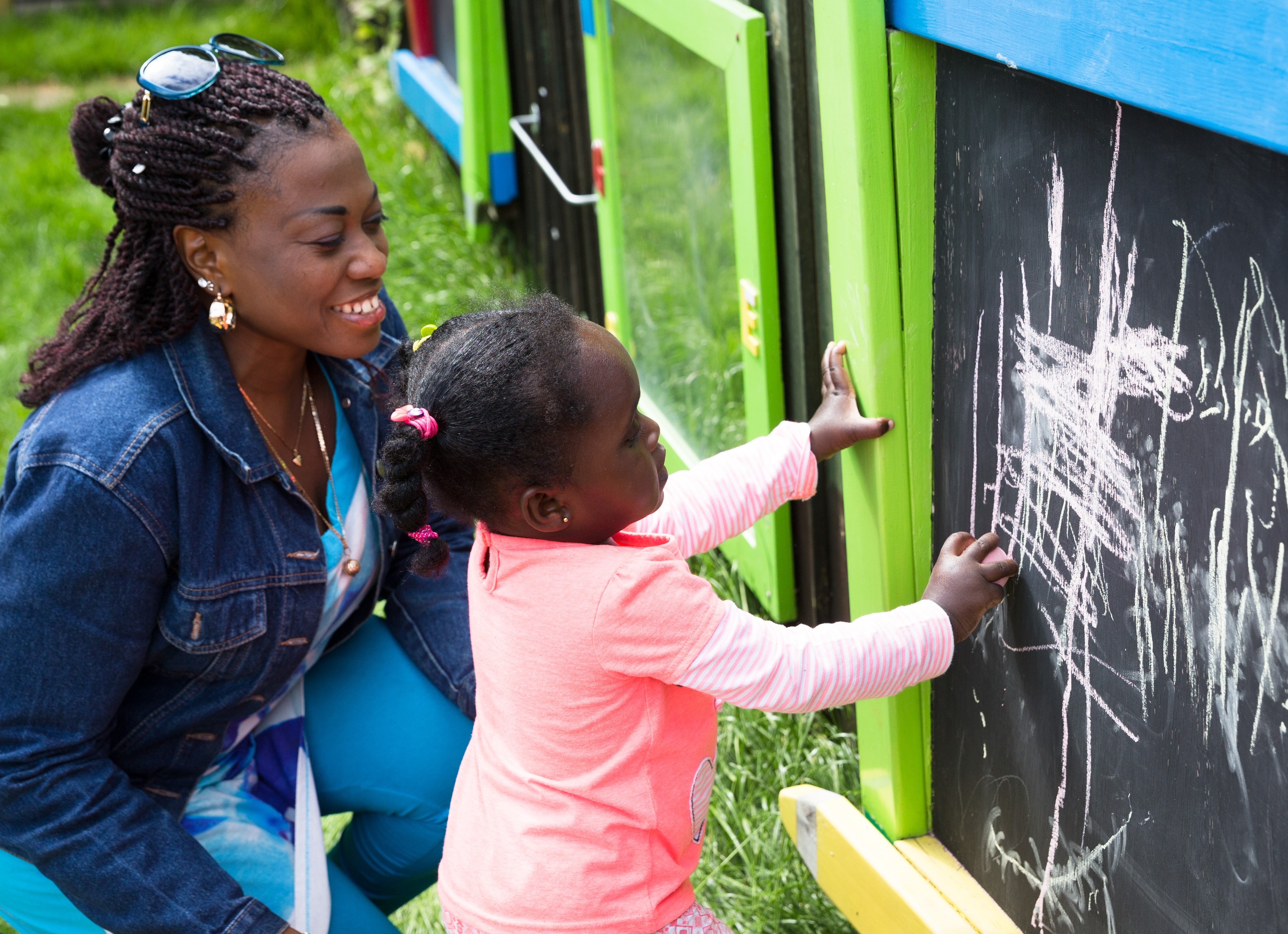The report by Together (Scottish Alliance for Children's Rights) seeks to inspire and enable everyone in Scotland to put children’s human rights at the heart of everything they do.
Please see below for links between Scottish policy and the Peep Learning Together Programme. This policy covers Education; Early Learning and Childcare; Children's Wellbeing; Parental Engagement and Community Learning and Development. You can also find here ![]() Scottish policy and the home learning environment.pdf a general overview of the home learning environment in Scottish policy.
Scottish policy and the home learning environment.pdf a general overview of the home learning environment in Scottish policy.
The Pupil Equity Fund supports the cross-cutting intentions of the policy we cite here and you may wish to use this fund to deliver the Peep Learning Together Programme in your setting. Please contact info@peeple.org.uk or call the Scottish office on 07767 169539 if you would like to discuss this further.
accordion image
The report by Together (Scottish Alliance for Children's Rights) seeks to inspire and enable everyone in Scotland to put children’s human rights at the heart of everything they do.
accordion image
‘Research shows that when parents and carers support their children’s learning, and when children live in a stimulating home learning environment, it improves children’s attainment and achievement. Family learning encourages family members to learn together, fostering positive attitudes to lifelong learning’.
The Action Plan provides delivery partners in local authorities, and the private and third sector, with a clear policy and delivery framework in which to build capacity for the expansion of ELC. This vision is underpinned by the principles of Quality, Flexibility, Accessibility and Affordability.
The Peep Learning Together Programme supports the following aims of the Action Plan:
accordion image
Realising the Ambition - Being me - followed up and replaced Building the Ambition.
‘Children make the most intellectual gains where there is high levels of parental involvement in children’s learning’.
‘Early Childhood Education and Care has a profound and long-lasting impact which measures taken at a later stage cannot achieve’.
Building the Ambition is the national practice guidance to support Early Learning and Childcare practitioners. It recognises home as the ‘first and most important place for a child to grow and develop’. The Peep Learning Together Programme implements the practice guidelines to:
accordion image
> Download > UK STEM Policy and the Peep Learning Together Programme (Jan 2019) or UK STEM Policy and Peep LTP - Summary
"This strategy sets out our vision of a Scotland where everyone is encouraged and supported to develop their STEM capability throughout their lives, enabling them to be inquiring, productive and innovative, both in order to grow STEM literacy in society and to drive inclusive economic growth." – Ministerial Foreword, STEM Strategy 2017
The STEM (Science, Technology, Engineering and Mathematics) Strategy emphasises the ‘crucial early years’ where STEM skills can be promoted and enthusiasm for STEM can be fostered. The Scottish Government recognises the need to close the equity gap in participation and attainment in STEM.
In order to allow children to develop STEM skills and interest, Scottish Government will work to ensure that early learning and childcare professionals have the ‘skills, knowledge and confidence to support children in relation to STEM’. Practitioners will give children and families a grounding in STEM, providing an ‘inspiring offer of STEM activity’. They acknowledge the need to improve ‘confidence and fluency’ in Maths for children and their families. Scottish Government recognise the need to support and resource practitioners in early years and school for this task.
The Scottish Government highlight the importance of building the skills, knowledge and confidence of families to promote and encourage STEM learning at home. This is part of what they describe as ‘STEM Capital’. The STEM Strategy supports the suggested focus of Regional Improvement Collaboratives to promote effective strategies and approaches for parental engagement and family learning in STEM in early learning and childcare settings and schools. The Peep Learning Together Programme supports practitioners to gain the skills, knowledge and confidence to support families to improve STEM learning at home. The Programme is used in a variety of settings including ELC settings, schools for transition into primary school, community centres, health centres and others. It is often delivered in partnership between these disciplines.
The STEM Strategy promotes partnership working to promote these aims to children and their families. Community Learning and Development (CLD) is recognised as having a key role in supporting equity by engaging with disadvantaged families. Since 2018, there has been a requirement for public STEM sector to work with CLD to engage disadvantaged people where they are funded by Scottish Government. The Peep Learning Together Programme can be used to build on the skills and resources of CLD and the STEM ‘public engagement sector’ (museums etc.) to promote STEM in partnership.
accordion image
Educational Governance makes a strong and informed case for working with parents and the focus of that work being improving the home learning environment.
'Parents have a right to expect their local school to engage fully with them throughout their children’s education’ -John Swinney, Cabinet Secretary for Education and Skills p.2
‘Improving the education and life chances of our children and young people is the defining mission of this government’ - John Swinney, Cabinet Secretary for Education and Skills, p.1
‘Student Learning is most effective when it is the result of a partnership between the school, teachers, parents and communities’ p. 18
Educational Governance: Next steps:
accordion image
‘Supporting, equipping and building capacity amongst Scotland’s parents to capitalise on children’s opportunities for learning is key in raising attainment and closing the poverty-related attainment gap’.
The Review assessed research and practice to identify what works well in Family Learning.
The Peep Learning Together Programme and the Peep Progression Pathway are highlighted under ‘What Excellent Family Learning Looks Like’.
accordion image
‘Parental and family engagement is a key factor in helping all children achieve the highest standards whilst reducing inequity and closing the attainment gap.’
The Peep Learning Together programme promotes the vision of the Framework to:
Parental Engagement is one of the key drivers in promoting educational excellence and equity. In relation to the Peep Learning Together Programme supports the:
accordion image
The Scottish Attainment Challenge aims to achieve equity in educational outcomes and raise the attainment of children and young people living in deprived areas in order to close the poverty-related attainment gap. The challenge focuses on and accelerates targeted improvement activity in literacy, numeracy and health and wellbeing in specific areas of Scotland.
It recognises three primary levers for change. These are:
The Peep Learning Together Programme supports these aims and levers for change by:
A robust longitudinal evaluation by the University of Oxford shows that children who participate in Peep develop strong foundations for literacy and self-esteem
accordion image
NHS Scotland have produced Setting the Table which provides nutritional guidance and food standards for early years childcare providers in Scotland.
“We know that eating habits developed in the early years frequently last into adulthood, so childcare providers have an ideal opportunity to support the development of positive food habits from a very early age”. Aileen Campbell MSP Minister for Children and Young People
As well as providing essential information for settings, and other providers, it acknowledges the importance of working alongside parents when implementing the guidance in order to:
• champion the importance of a well-balanced diet and positive choices both with children and their parents
• assist providers to work with families who face the biggest challenges in providing a healthy diet for their children
• highlight the importance of food as a tool for social development and learning.
The guidance devotes a whole section to “Playing and learning with food”.
The Peep Learning Together Programme is full of topics which really support the guidance in this important document. For example, from the Health and Physical Development Strand, the topic “Making the most of food and mealtimes” aims to help parents/carers and practitioners to explore the role of food and mealtimes in family or setting life, to recognise their value in promoting communication and social skills and to understand how involving children in buying, preparing, cooking and sharing food can support their early learning and development.
accordion image
Developing the Young Workforce is a seven year (2014-2021) programme which aims to better prepare children (aged 3-18) for the world of work. The headline aim of the programme is to reduce youth unemployment by 40% by 2021.
Please see this case study from Moray about how the Peep Learning Together Programme is used to prepare high school pupils for the world of work. Progression routes from the Peep Progression Pathway to further education providers also supports this aim.
accordion image
This Statement of Ambition recognises a number of features which align with the Peep Progression Pathway. The key tenets are that learning is:
Lifelong The Peep Progression Pathway provides learning for all generations, also offering the accessible starting points for under-confident learners to develop ‘learner identity’ and confidence in order to progress
Lifewide ‘covering personal, work, family and community aspects of living’. The Peep Progression Pathway is rooted in these elements.
Learner-centred ‘based around the interests of the learner and working towards their own goals’ ‘The basis of the Peep Progression Pathway is the parent's interest in their own child and the developmental aims are to improve the home learning environment and to pursue learning and employment goals.'
Other areas highlighted by the Statement of Ambition which are addressed by the Peep Learning Together Programme and the Peep Progression Pathway include recognising:
Through delivery of the Peep Progression Pathway learners improve their skills, knowledge, confidence, social networks, communication skills and critical thinking in a flexible, community-based provision offering Further Education progression routes (p.7).
This short film highlights some of the adult learning benefits of the Peep Progression Pathway. This is part of an evaluation by Learning and Work, as part of a 'Parents and Employability' project.
accordion image
The overarching aim of the Children and Young People’s Act 2014 (known as ‘The Act’) is to ‘Make Scotland the best place in the world to grow up in by improving outcomes and reducing inequalities for all babies, children, mothers, fathers and families across Scotland to ensure that all children have the best start in life and are ready to succeed’.
The Act sets the strategic direction for the way in which Scottish public services should be delivered and assists public bodies in their endeavours to improve the life chances of children and young people.
Peep Learning Together Programme supports the aims of the Bill to:
accordion image
Getting it Right for Every Child (GIRFEC) is a Scottish Government approach that encourages services working with families to work together to spot and deal with issues early and before these escalate into a crisis in order that children can reach their full potential. The GIRFEC approach has the child at the centre and works will children and their families on ways to improve wellbeing.
The Peep Learning Together Programme supports this by:
The approach uses the SHANARRI wellbeing indicators of Safe, Healthy, Achieving, Nurtured, Active, Respected, Responsible, Included. These are promoted in the Peep Learning Together Programme under the strand headings of:
and are embedded in the Peep approach.
accordion image
‘Play creates a brain that has increased flexibility and improved potential for learning later in life’ (Lester and Russell, 2008).
The Play Strategy recognises that play is crucial to Scotland’s wellbeing: emotionally, socially and environmentally. It reinforces the message of Article 31 of the United Nations Convention on the Rights of the Child that ‘play is a right’.
The Strategy also states that ‘parents and carers are a child’s first educators and have a crucial role to play in encouraging their development.’ and recognises the need for ‘a rich home learning environment’.
It states that essential to achieving this is a professional, qualified and well-led workforce with the skills and confidence to provide support and advice to parents and carers about play.
The Peep Learning Together Programme supports parents/carers and children to learn together through play to enrich the home learning environment. Peep practitioner training, resources and support increase the skills and toolkit of Early Learning and Childcare professionals to support and advise parents and carers about the importance of play for children's learning and development.This film about Peep in Fife shows practitioners and parents highlighting some of these benefits.
accordion image
The Regulations stress that organisations funded specifically for Community Learning and Development (CLD) work should be closely aligned with ‘education (including schools and nurseries), culture, sport, leisure and library services’ (p.7) in order to deliver CLD outcomes. It commends collaborative working across a range of partners for effective CLD practice.
The Peep Learning Together Programme is deliverable through multi-agency working to provide these CLD outcomes. This Peep Dundee case study provides an example of this. The development of the Peep Progression Pathway was funded by Education Scotland’s Innovation Fund, demonstrating an innovative and coherent application of CLD policy.
accordion image
‘The nurturant qualities of the environments where children grow up, live and learn parents, caregivers, family and community – will have the most significant impact on their development’.
The Scottish Government launched the National Parenting Strategy with the purpose of acting ‘as a vehicle for valuing, equipping and supporting parents to be the best that they can be so that they in turn can give the children and young people of Scotland the best start in life’.
The Peep Learning Together Programme promotes the aims of the Strategy to:
accordion image
‘Working with the family together rather than with the child or the adult separately makes a greater impact on the literacies development of both child and parent or carer. This can be achieved by combining early childhood interventions and early parenting strategies with adult literacies work. Parents and carers who develop their own literacies often gain the confidence and skills to help their children with reading, writing and numbers.'
The Peep Learning Together Programme and integrated Peep Progression Pathway offer such an early childhood intervention, early parenting strategies and integrated adult literacies. Parents report that their own literacy and other employability skills increase as a result of completion of Peep Progression Pathway units.
accordion image
This guidance clarifies the expectations of Community Planning Partnerships. It highlights ‘family learning and other early intervention work with children young people and families’ and prioritises preventative work (p.5). It recognises that CLD practice is strengthened by working with a range of partners (p.3).
It defines the focus of CLD as:
The Peep Learning Together programme provides an early intervention/prevention approach, deliverable with a range of partners which improves life chances for children and their parents.
accordion image
The Child Poverty Act (2010) sets out the UK-wide targets to eradicate child poverty by April 2020. Investment in eradicating child poverty and reducing inequality remains vitally important to the Scottish Government. Shifting resources into early intervention and prevention in the early years of a child’s life is a key starting point.
The Peep Learning Together Programme provides a cost-effective, strength-based and accessible early intervention/prevention approach and resources which builds on practitioners existing skills to address and tackle the poverty-related attainment gap.
accordion image
At the heart of the Framework is an approach ‘which recognises the right of all young children to high quality relationships, environments and services which offer a holistic approach to meeting their needs’. The Framework contains an action plan which seeks to provide a greater focus within existing services on ‘the development of parenting skills, developing broader roles in the workforce and enhancing the role of childcare, pre-school and school in family learning’.
Peep Learning Together Programme supports the aims of the Early Years Framework to:
accordion image
The Parental Involvement Act recognises that parents ‘are by far the most important influences on children’s lives’ and their ‘first and ongoing educators’. It aims to encourage parents to develop their children’s learning at home and in the community.
The Peep Learning together Programme supports local authorities to:

Quotes from Peep parents
'I didn't realise all my daughter was capable of and that opportunities for learning are everywhere'.
'I learnt a lot about everyday things I am doing that are bringing him on, things I would not have realised without Peep'.
'Peep has helped me become more confident as a parent and as a person'.
I have really enjoyed the course, I think it is great that it relates to your own kid. You get fantastic Ideas how to play and help their development. The Peep practitioners are great and very approachable. I would definitely do it again'.


